April 1-16, 2009
Summary: Volunteers Aaron and Maggie help Jaime and I take care of the tasks at hand. The major undertaking completed in the past two weeks has been preparation and planting of seedbeds.
First, a truckload of river sand (salt-free) was acquired to mix with other compost ingredients. We had to go south beyond the town of Charapoto to find river sand in a large rented truck. We now have a huge pile (several cubic meters) at the greenhouse. This sand will hopefully last over a year, if not two. Sand is needed for filtration in the soil. High concentrations of clay in the local soil make seed planting and sapling growth very difficult in the greenhouse without it, otherwise after baking in the equatorial sun, the soil turns into what is effectively a brick.
Also acquired, this time from the Belletine revegetation site, was a truckload (a dozen plus sacks) of the leaves of a plant known locally as Tierramonte. This plant’s leaves are considered to be a very nice natural fertilizer. As the leaves decompose, which they do rather quickly, a nice, fluffy soil is created. Tierramonte leaves will be added to the soil of seed beds to help with germination.
Once the necessary components for soil were obtained, we dug up old seed beds to replace the soil. The old soil was recycled because it already had 1/3 sand in it. More compost was added to bolster its nutrients, along with a little more sand and Tierramonte leaves. The freshly mixed soil was then put back in the seed beds.
Seeds of Guachepeli from Maria Dolores barrio, Jaboncillo from el Astillero, and Dormilon from la Bellaca, were soaked for 48 hours in water and then mixed into the seedbed soil. The Dormilon seeds had been scoured to speed water absorption. Seeds of Seca from la Gorda, and Pechiche from el Toro were planted directly without soaking and some smaller batches of Guayabo (La Gorda), Laurel (Bellavista) and Achiote (Los Caras) were also planted. Finally, the seedbeds were capped with pure leaves of Tierramonte as mulch to help maintain humidity.
Also accomplished this period was watering trees at the most sun-exposed revegetation sites (Universidad Catolica, Rattys and San Roque). Despite the weak rainy season this year, which appears to have fizzled out very anti-climatically in mid-March, the trees are holding on. If the rains really have ended for the season, we’ll have a healthy force of volunteers arriving next week to begin watering of sites, which will enable trees to continue to grow, albeit slowly, throughout the dry season.
Identification stakes were installed at the Belletine site when we went to collect Tierramonte leaves. And finally, a batch of one hundred oddly timed Guachepeli saplings were transplanted to free up more seedbed space.
The volunteer schedule has become jam-packed from May through October, which is great because there’s lots to do.
Aaron, Ramon and Maggie shoveling out several cubic meters of river sand at the greenhouse.
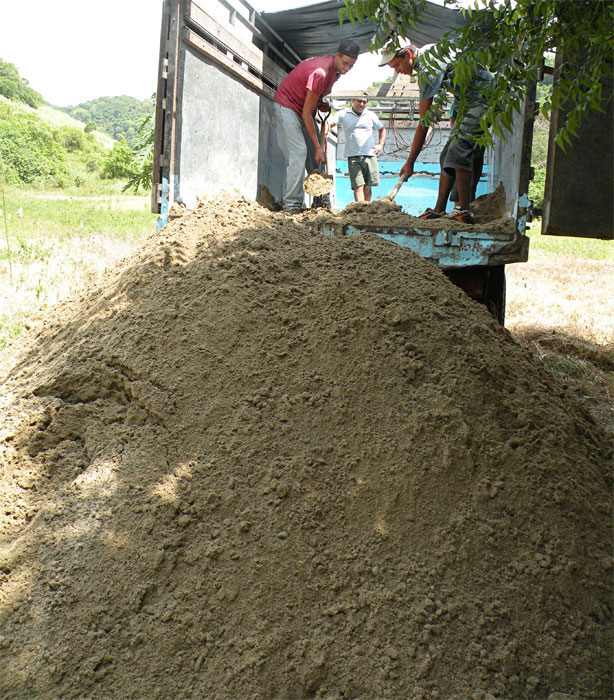
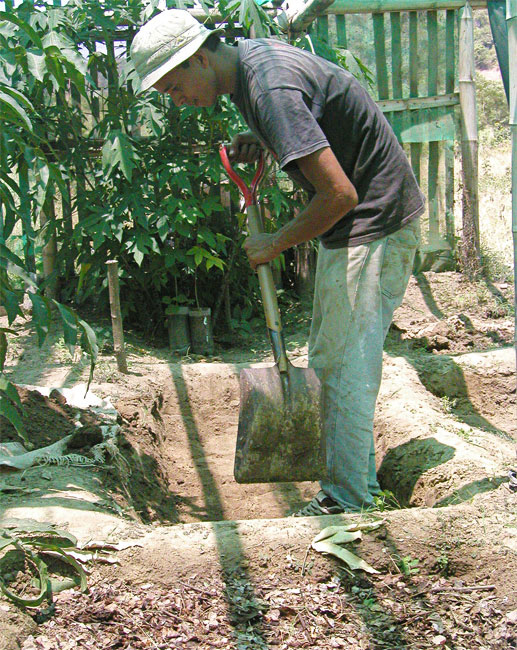
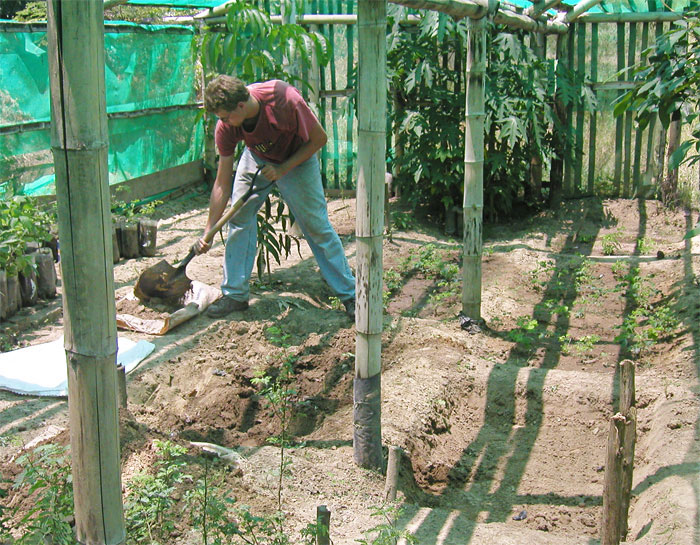
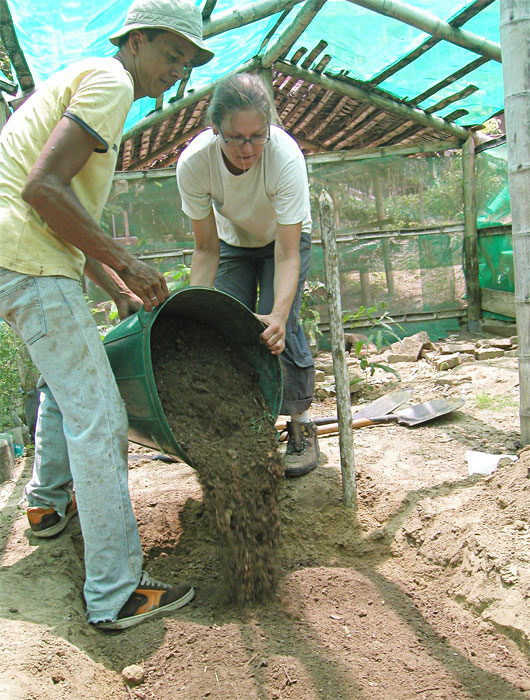
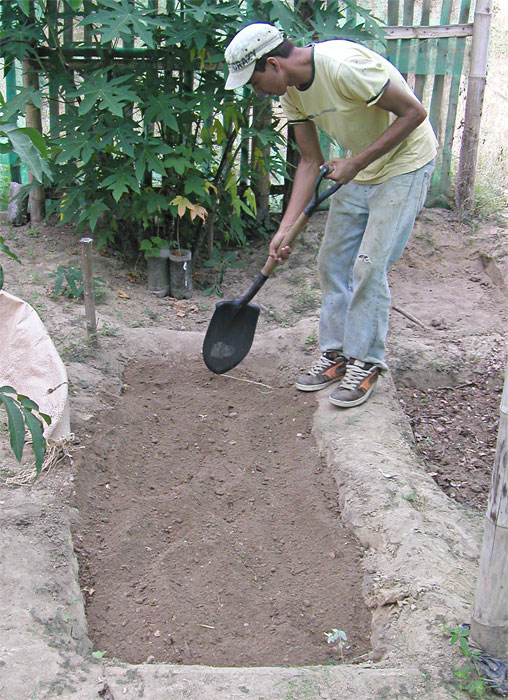
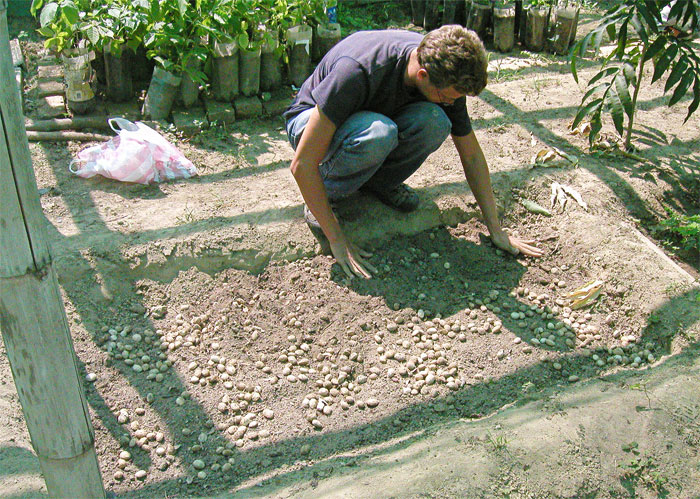
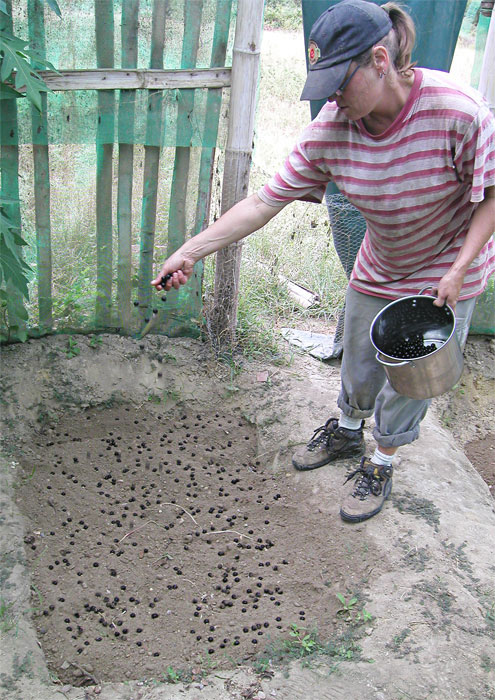



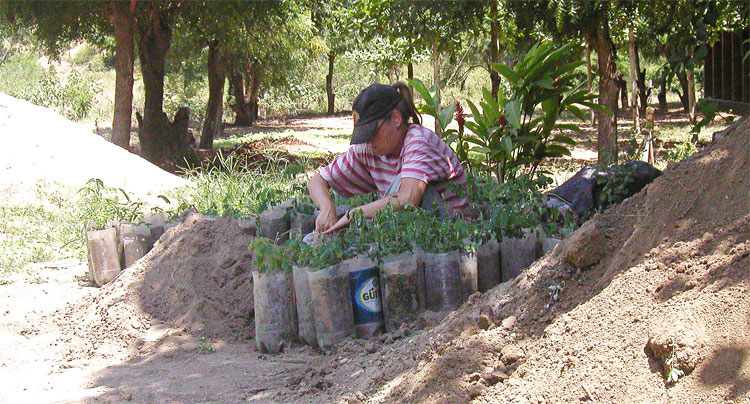
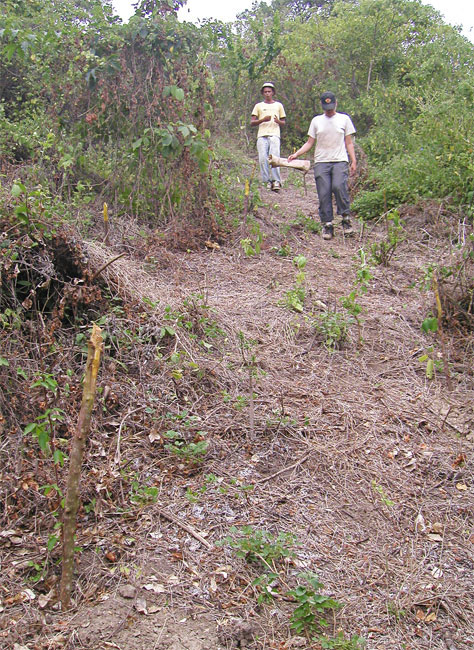
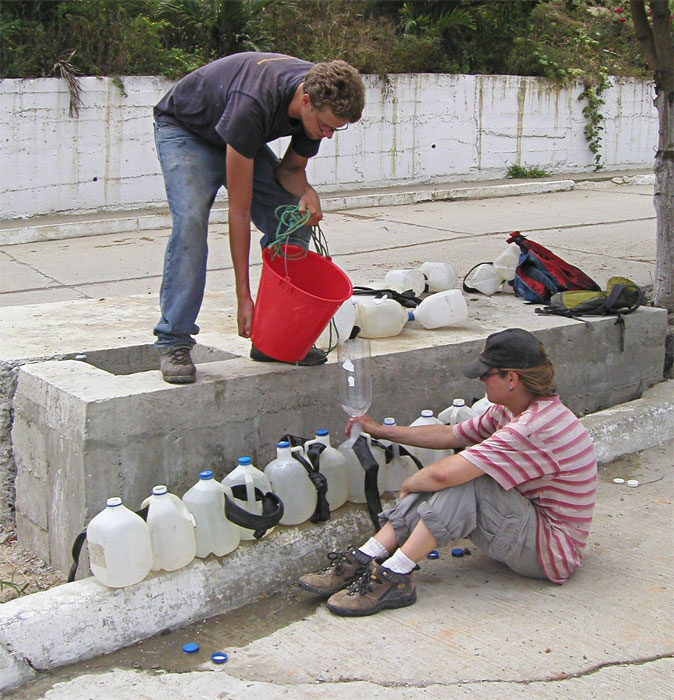
Pásalo bien,
Clay

Thanks for sharing. I read many of your blog posts, cool, your blog is very good.